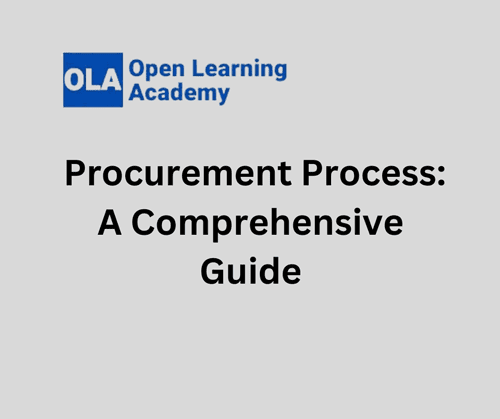Master the procurement process with our comprehensive guide. Learn the steps, types, and best practices for successful procurement today!
This comprehensive guide will provide an overview of the procurement process, including the steps involved, the different types of procurement, and best practices for procurement. This guide is essential for anyone who wants to gain a better understanding of procurement or who is involved in the procurement process.
What is procurement?
Procurement is the process of purchasing goods or services from a vendor or supplier. It involves identifying the needs of the organization, conducting market research to find potential suppliers, and selecting a supplier through a competitive bidding process. Procurement also involves negotiating and managing contracts with suppliers.
The importance of procurement
Procurement is a critical component of any business or organization. It allows organizations to acquire the goods and services they need to operate efficiently and effectively. Procurement also helps organizations to reduce costs by finding the best value for their money.
Types of procurement
There are three main types of the procurement: centralized procurement, decentralized procurement, and consortium procurement.
1. Centralized Procurement
Centralized procurement is a procurement model in which a single department or team is responsible for all procurement activities. This model is common in large organizations with a centralized structure. Centralized procurement allows for greater control and standardization of procurement processes.
2. Decentralized Procurement
Decentralized procurement is a procurement model in which each department or business unit is responsible for its own procurement activities. This model is common in smaller organizations or organizations with a decentralized structure. Decentralized procurement allows for greater flexibility and responsiveness to departmental needs.
3. Consortium Procurement
Consortium procurement is a procurement model in which multiple organizations collaborate to purchase goods or services. This model is common in the public sector, where organizations may join together to purchase goods or services in bulk, resulting in cost savings.
The procurement process
The procurement process can be divided into eight steps:
Step 1: Identifying the need
The first step in the procurement process is identifying the need for goods or services. This involves determining what goods or services are required, how much is required, and when it is required.
Step 2: Conducting market research
Once the need has been identified, the next step is to conduct market research to identify potential suppliers. This involves researching suppliers, their products or services, and their prices.
Step 3: Developing a procurement strategy
Based on the market research, a procurement strategy is developed. This involves determining the procurement method, such as competitive bidding or direct negotiations, and the evaluation criteria for selecting a supplier.
Step 4: Drafting a procurement plan
Once the procurement strategy has been developed, a procurement plan is drafted. This plan outlines the procurement process and the specific requirements for the goods or services being procured.
Step 5: Advertising and soliciting bids (continued)
The next step is to advertise the procurement opportunity and solicit bids from potential suppliers. This involves publishing a request for proposal or request for quotation, outlining the specific requirements for the goods or services being procured, and inviting potential suppliers to submit a bid.
Step 6: Evaluating bids and selecting a supplier
Once bids have been received, they are evaluated based on the criteria outlined in the procurement plan. The evaluation process may include a review of the supplier's qualifications, a technical evaluation of their proposal, and a financial evaluation of their bid. Based on this evaluation, a supplier is selected.
Step 7: Negotiating and awarding the contract
Once a supplier has been selected, the next step is to negotiate the terms of the contract. This may include negotiating the price, delivery schedule, and other terms and conditions. Once the negotiations are complete, the contract is awarded to the selected supplier.
Step 8: Contract management
The final step in the procurement process is contract management. This involves monitoring the supplier's performance, ensuring that they are meeting the terms of the contract, and addressing any issues that arise.
Best practices for procurement
To ensure successful procurement, there are several best practices that organizations should follow:
- Conduct market research to identify potential suppliers and determine the best procurement strategy.
- Develop a clear and detailed procurement plan outlining the specific requirements for the goods or services being procured.
- Use a competitive bidding process to ensure that the organization is getting the best value for its money.
- Evaluate bids based on objective criteria and select the supplier that offers the best value.
- Negotiate the terms of the contract to ensure that they are fair and reasonable.
- Monitor supplier performance and address any issues that arise.
Conclusion
Procurement is a critical component of any business or organization. Understanding the procurement process is essential for success. By following best practices for procurement, organizations can acquire the goods and services they need to operate efficiently and effectively.
FAQs
- What is procurement?
- Why is procurement important?
- What are the different types of procurement?
- What are the steps in the procurement process?
- What are the best practices for procurement?


